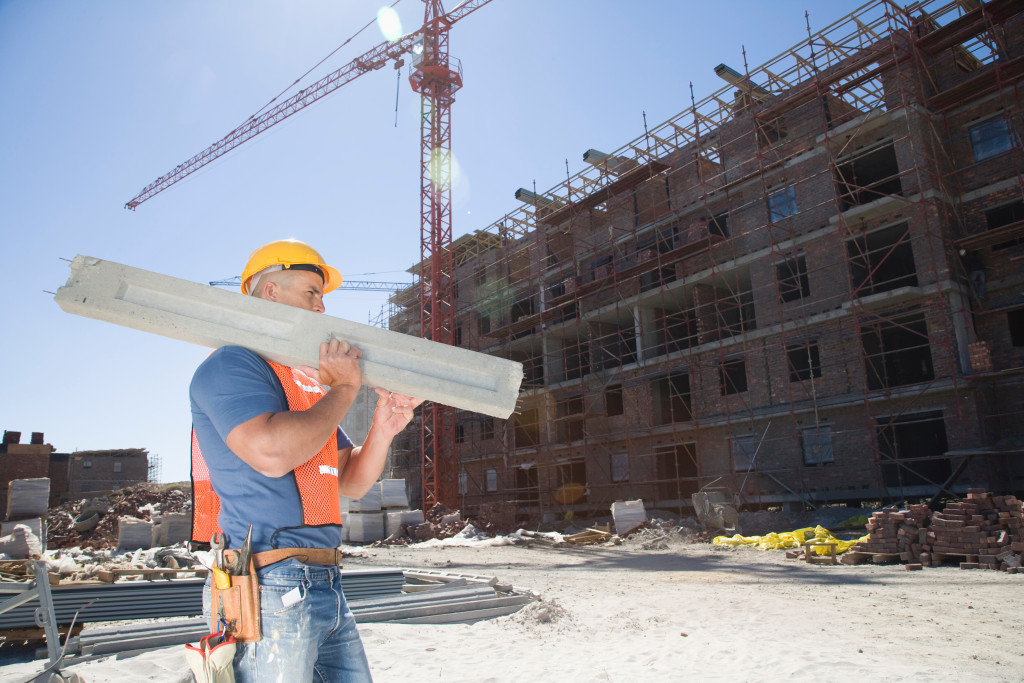- Invest in comprehensive safety training and education for construction workers to ensure their understanding of established protocols.
- Schedule regular tests, such as the CITB and HSE tests, to gauge a worker’s preparedness and knowledge of health and safety best practices.
- Implement a regular inspection schedule for all equipment to ensure they are in good working condition.
- Train workers on construction equipment use, maintenance, and operation so they understand how to work safely with them.
Safety is a top priority when running any successful construction project. As a business operator, having an effective safety plan for your workers is crucial to their well-being and the project’s overall success.
Here are practical ways to ensure your construction workers do their work safely, helping to minimize the risk of on-the-job accidents and injuries. Understanding and implementing these safety measures will ultimately contribute to a positive work environment, improved productivity, and a stronger bottom line for your business.
Proper Training and Education:
Investing in comprehensive safety training and education for your workers is the first step in promoting safety on the construction site. Ensure that all new hires undergo a rigorous safety orientation and that supervisors hold regular safety meetings to discuss concerns and address potential hazards.
When workers understand the importance of safety and follow established protocols, they are more likely to work safely and responsibly, which results in fewer accidents and injuries. Here is the essential training that all construction workers need to be familiar with:
- Use safety equipment such as hard hats, goggles, earplugs, and respirators.
- How to handle hazardous materials and safely store them away from the worksite.
- Lifting techniques that minimize strain on the body and help avoid injuries.
- The correct way to operate machinery and equipment to avoid accidents.
- A review of safety protocols and procedures that should be followed at all times on the construction site.
Taking the Necessary Tests

Tests are also important to help ensure safety on the construction site. These are essential in gauging a worker’s preparedness to handle job responsibilities. Depending on the type of construction, tests can include the following:
CITB Test
The Construction Industry Training Board created this test to assess a worker’s knowledge of health and safety best practices. This ensures that all workers know the regulations and procedures when working in a construction environment. It is recommended that workers schedule a CITB test at least once every three years. This test can be done online, and some employers may even cover the cost of it.
Drug and Alcohol Testing
It’s essential to have a drug and alcohol testing policy in place for all construction workers. This is important as these substances can affect their judgment, leading to accidents on the job. Employers should schedule regular tests for all workers to ensure they can work safely and without any impairment.
HSE Tests
The Health and Safety Executive (HSE) offers tests for various types of hazardous substances used on a construction site, such as asbestos or hazardous gases. Workers must pass these tests to be authorized to safely handle such materials.
CSCS Test
The Construction Skills Certification Scheme (CSCS) test is a qualification that allows a worker to demonstrate their knowledge and experience of health and safety in the construction industry. This will ensure that all workers know the risks and hazards associated with their job and how to handle them properly.
Proactive Housekeeping
Maintaining a clean and organized worksite is essential for preventing accidents and safeguarding worker safety. Here are some tips on how to do that:
- Ensure adequate space for workers to move around without tripping over debris or materials.
- Keep walkways and stairways clear of obstructions at all times.
- Clean up any spills immediately, using the correct safety equipment and products.
- Label hazardous materials clearly and store them securely away from the worksite.
- Enforce daily inspections to ensure the site is always free of potential hazards.
Regular Inspection and Maintenance of Equipment
Regular inspection and equipment maintenance are crucial to ensuring construction worker safety. Defective equipment can lead to serious accidents and injuries. As a business owner or construction operator, you are responsible for preventing potential hazards resulting from equipment failure. Here are ways to navigate this:
Implement Regular Inspection

Implement a regular inspection schedule to ensure that all equipment functions correctly and that any necessary repairs or replacements are carried out promptly. Additionally, it allows you to identify any potential problems before they become safety issues.
Train Workers on Equipment Operation and Maintenance
Ensure workers are properly trained on using, maintaining, and operating all construction equipment. This will help them understand how to use the tools safely and maintain them in good working condition. They must also know when to seek assistance from a qualified technician.
The construction industry is one of the most hazardous working environments. With the proper safety procedures, you can help protect your workers from harm and create a better work environment for everyone involved. Not only will this benefit your business in terms of cost savings, but it also contributes to improved morale and productivity among your workforce.







